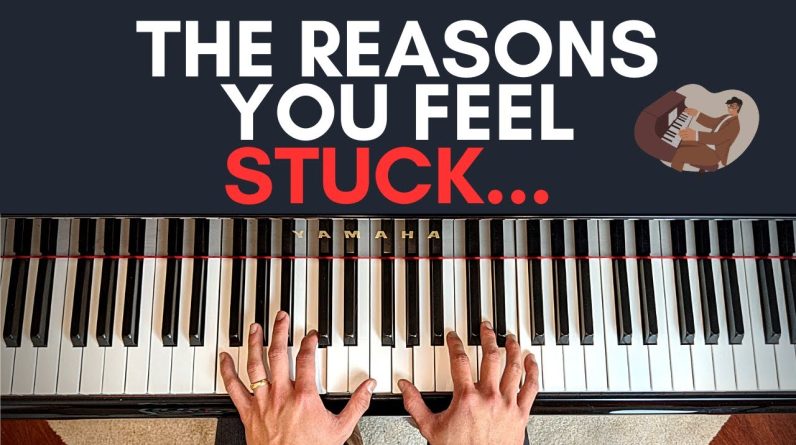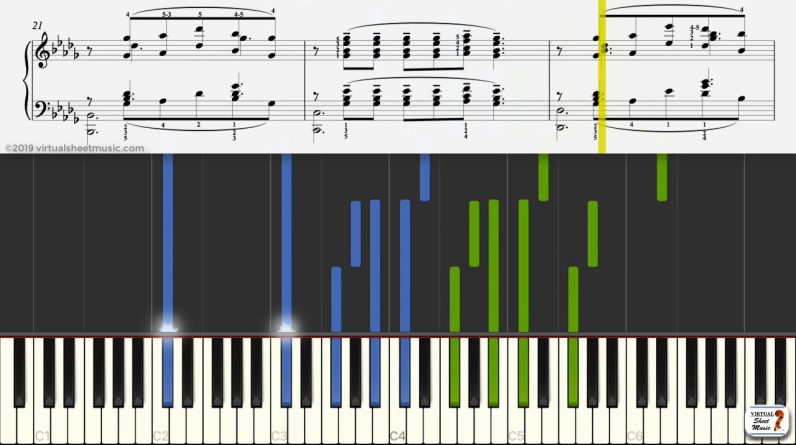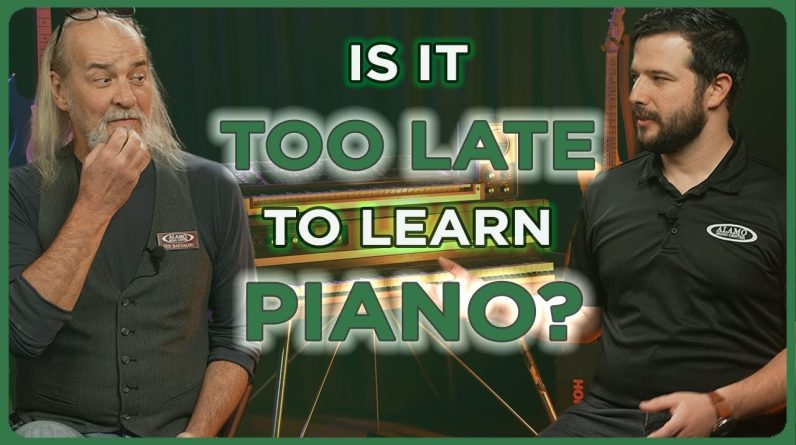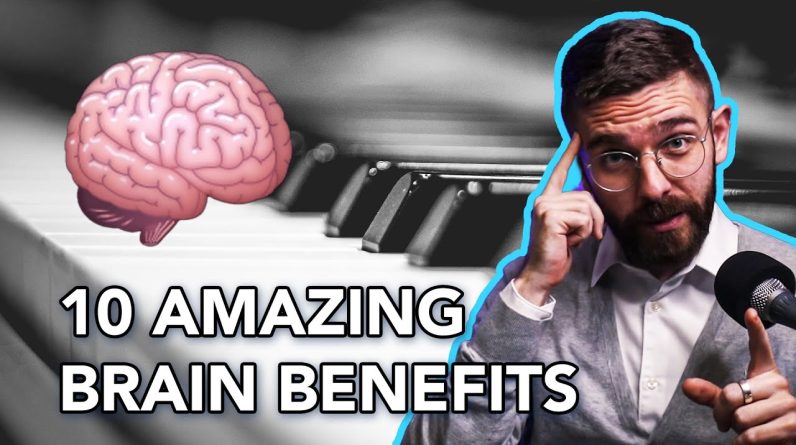Do you ever wonder how some people can easily learn a whole piano piece in just weeks while it takes months for most to learn? In this lesson, we will talk about poor piano practices and three ways to correct this. I have acquired a cute assistant to help explain the lesson, so be sure to watch until the very end.
If you’re somebody that takes weeks or even months to learn just one piece, you have stumbled upon the right video. I want to explain to you in this video why students take so long to learn pieces and they sadly lose motivation along the way.
I want to teach you how to avoid making this great mistake and give you three concrete steps on what you can do in your practice to 5x your learning speed. Now the biggest mistake that beginners make when practicing piano is simply playing the piece from start to end. Playing through the piece from start to end is not actually a good use of practice time.
Mainly because you’re not utilizing strong repetition techniques. I’ve played piano for 19 years now. I’ve experimented with a whole bunch of different practice techniques and I can tell you one of the least effective ways of using practice time is simply to play from the start to the end of the piece.
Unfortunately, this is how most people think practice should be. This is why they don’t get very good results.
I’ve literally had students who have struggled with very, very small sections for months. And upon just working 10-15 minutes with me, I teach them to use some very strong repetition techniques, and they just learned that part in that 10-15 minutes.
Now am I saying that playing from the start to the finish is a forbidden sin and that should never be done? No, I’m not. I think it should be done perhaps maybe at the start of seriously learning a piece or maybe every now and then, just to get a feel for what the piece sounds like in its entirety.
But I would strongly advise you against using playing from ‘Start to the End’ as a regular routine in your practice.
The reason is because it doesn’t allow you to effectively learn the parts. This is my new puppy, Milo. ? I’ve just had Milo for about a week and we’ve been doing some very basic puppy training – Sit, Stand, Stay. That kind of stuff.
And sit. Good boy. ? And one of the things that’s been particularly effective for Milo is repetition. When I started training Milo to sit, the first couple of days I would just ask him to do it once or twice. But I realized that the SIT command stuck to him much, much more when we were doing it something like 10 to 15 times per day.
Training Milo reminded me a lot about my own piano practice. If you are enjoying this piano lesson so far, make sure you subscribe to this channel. We have a ton of lessons, tutorials, and strategies to help you become a better pianist, so make sure you subscribe so you don’t miss out on any of our content. When things are just done once through, it doesn’t really stick in your head as much as if you do it something like 10 to 15 times.
It can seem rather common sense to, you know, hear about that repetition is the key to effective practice but let’s talk quickly about why people don’t do it.
Why do people always revert to simply playing the piece from start to the end rather than doing the repetitive sectional practice? I think it’s because what initially attracted us to the piece we want to learn, is us hearing this beautiful final product of the piece. We sort of fall in love with this final polished version rather than the gritty and the trench work process. Imagine being served a delicious and a very visually Instagrammable plate of food. As a consumer, it’s really easy to fall in love and just enjoy this food.
But from a chef’s perspective, he or she sees this plate of food from a completely different lens – the food required, hard work, concentration, patience, and intricate technique.
When you make a decision, you want to play a piano piece. What I want you to try to do is to change your mindset. Change your role from being the customer to the chef. To succeed in executing this piano piece, you need to start to think like a producer and not the consumer.
A chef might ask questions like, ‘What are some of the ingredients I need?’, ‘What are the most time consuming parts of this recipe?’, ‘Should I perhaps start on those parts first?’.
I hope you’re getting a feel for what I’m trying to get at here.
But when you make a decision to play a piano piece, you want to come at it from an angle of work first and enjoyment later. You have to switch on your logical brain and get to work first, before the enjoyment comes later. I think too many people get, let’s say, falsely attracted to the the beautiful enjoyment of the piece at the end without realizing how much hard work process goes into before the piano piece can sound like what you hear on YouTube or Spotify. The payoff is huge when you practice with this kind of mindset.
It is a lot of hard work at first, but if you do it mindfully I promise you this will pay off hugely.
You will enjoy your piano practice so much more rather than always playing the piece from start to the end every day. I promise you that gets you not very far at all. Congrats on making it to this far in the video. Let’s talk about 3 Concrete Practice Techniques you can use, rather than just the mistake of playing from start to the end every time you practice piano.
Practice Technique number 1 is called No Rhythm Practice
This is one of my favorite ones to do.
I take out a small section of the piece I’m practicing and I actually throw a rhythm out of the window for the time being. So I try to play, let’s say, 4 bars of something and I have to make 100%, 100% of all the notes. So all my notes must be played correctly but I am allowed to not follow the rhythm so I can, for example, slow down when a particular part gets harder. Let’s use Fur Elise.
Everybody knows Fur Elise. So, let’s say, I’m practicing Fur Elise, I could do something like this for the No Rhythm Practice. So what I’m doing there is I’m just really taking my time making sure all the notes are played correctly.
Get to the right place. Get to the right place.
Get to the right place. …to the right place.
Get to the right place. To recap in the No Rhythm Practice, you can temporarily not worry about rhythm, but you have to make 100% of the notes. In my No Rhythm Practice I try to do a section successfully for 5 times in a row before I move on to the next part. I really love this way of practicing because it trains my fingers to always play the correct notes and not gamble with my notes. Playing piano is very difficult.
It’s sort of like juggling 10,000 balls at the same time. When you take away the rhythm temporarily, you’re just removing a couple of balls so it’s easier to juggle the other things such as the notes and the coordination of your hands.
Practice Technique Number 2 is to alter the music to repeat hard parts
So for example, if in your piece of music there’s a very, very small section that always trips you up. You might want to repeat that part just a couple more extra times so you get more chance to practice that particular movement.
When I was working on Bach Prelude in C minor, what I did was I repeated every bar twice so instead of playing it normally like this… I did this instead..
So, you get the idea. You strategically alter, lengthen or multiply that particular part so you just get that extra practice in to work on that muscle memory.
Practice Technique Number 3 is Pedal-less Practice
As we were saying before, I think piano playing is like juggling 10,000 balls at one time.
If you just take away the pedal, your brain is just offloaded to concentrate a little bit more on what’s happening on the keyboard. So take away that pedal and start practicing in small sections.
And there you go – the biggest mistakes that beginners make is to play the piece from start to end and think that’s practice. What’s much better for you is to think about how you can smartly repeat parts, so that you actually get some practice in. If you, let’s say, imagine a dancer needing to learn a 5-minute routine.
Now obviously the best way to learn the 5-minute routine is not to just go from start to the end but to actually work in small sections in repetition.
So that he or she can master those parts and actually build from small Lego blocks into a nice structure at the end. We have lots of other practice strategies on this channel. So I’ll catch you in the video here next. See you for now.
———————————————————————————
Wanna own the metronome watch I’m wearing? Use the promo code ‘JAZER20’ to get 20% off- https://www.soundbrenner.com/jazer
? Timestamps
0:00 Intro
1:40 Cute Foreword
3:00 Analogy on How & Why
5:04 Practice Technique 1
6:55 Practice Technique 2
7:50 Practice Technique 3
8:15 Milo Ends the Lesson
Stay in touch on Instagram for bite-sized piano tutorials and lessons- https://www.instagram.com/jazer.lee/
Subscribe for more free piano tutorials: www.youtube.com/c/LearnPianoWithJazerLee
? Check out my other awesome playlists
Tutorials and Tips:
https://youtube.com/playlist?list=PLMawC1bdeZRHB4EYjsMDmgCDhBpCIvD3o
Easy Songs You Can Learn Right Now:
https://youtube.com/playlist?list=PLMawC1bdeZRFp0NKbEvunHj3Xl008OuHj
- Pianoforall Review: By Current Pianoforall Student (2024) - January 16, 2024
- 7 Pitfalls Piano Beginners Face and Tips That Will Help - January 7, 2024
- Learn Clair de Lune Sheet Music by Debussy – Keyboard Practice Video - December 16, 2023








